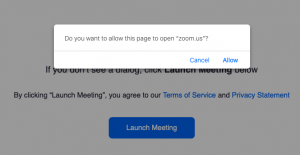Chaos theory is a branch of mathematics that seeks to understand the inner workings of dynamic systems, which modify their behaviour under a seemingly chaotic, non-linear way. Whether chaos theory can apply to how learning occurs, due to the myriad of internal and external factors involved, is still subject to academic debate. Examples of such internal factors are self-motivation, confidence, ability, prior knowledge, metacognitive skills and learning strategies, etc and of external factors, teacher competence, physical learning environment, government policies, etc.
Some see the interactions between such factors as similar to those in a dynamic system (Akmansoy & Kartal, 2014) and draw interdisciplinary parallels as a result, whereas others say that this association is ‘misguided’ (Hunter and Benson, 2010). Either way, chaos theory can help us see education provision in a completely different light which might inspire innovative thinking in solving complex problems within the field and should be explored.
Dynamic systems
The force or influence applied by each of a system’s internal components on one another, compounded with the influence by forces external to the system, affect the dynamics of its components in unpredictable ways (Reference for Business). A good example of this is weather forecasting (Alkan), where the surface of planet Earth is a dynamic system composed of humidity, oxygen, dust and other elements. Within this system physical forces such as temperature, pressure and gravity determine movement of its composite elements in ways that can be forecasted, but not predicted exactly (e.g. where it rains, when hurricanes are formed, how often sandstorms appear, etc.). Other examples of dynamics systems are inter-human dynamics, exchange markets, and even the movement of water molecules within a glass of water that was stirred.
The reason why we can never predict how a dynamic system will react with any precision is not because its inner workings are physically chaotic and unpredictable. It is because there are too many factors influencing the system, both internally and externally, escaping our ability to identify and keep track of all of them, even with sophisticated computer modelling. Hypothetically, if we could identify ALL the factors involved, no matter how small, study their behaviour and track their influence on ALL other system components, at the same time, we would be able to predict the future. This is because dynamic systems are deterministic despite them seeming random (i.e. an event is the result of, or caused by, a series of other events that led to it and is never the result of randomness). This is why chaos does not equate randomness or erratic behaviour, but only appears to do so (Reference for Business).
Determinism is also often equated, especially in the field of philosophy, with the absence of agency and freewill. However, Chaos Theory does not remove the agentic traits of each element of the system, but maintains instead that “each component of a complex system has the ability to fluctuate, randomly and unpredictably, within the context of the system itself” (Reference for Business), while also exerting influence on its environment and other system components.
The Butterfly Effect
Determinism in the smallest influences within the system, as described above, gave rise to the concept of the Butterfly Effect, introduced by MIT, Edward Lorenzv, in the early 1960s (Reference for Business). Colloquially, we know it as when a butterfly flaps its wings in Texas, causes a hurricane in China (Boeing, 2015). Within a dynamic system the concept describes how the influence of each force or factor, no matter how small or insignificant, will result in unforeseeable, and potentially significant, impact elsewhere within the system (Reference for Business). To illustrate this, researchers John Briggs and F. David Peat have been quoted as having said that “the whole shape of things depends upon the minutest part. The part is the whole in this respect, for through the action of any part, the whole in the form of chaos or transformative change may manifest” (Wheatley, 2001).
“By analyzing problems in terms of multiple variables, one may discover a rich array of potential causes” (Çobanoğlu, 2008 in Akmansoy & Kartal, 2014, p.511)
Because of the dynamism of internal and external forces it is often difficult to say whether a big change on the system will result in a state significantly different than the one it started from due to potential internal self-cancelling forces. Likewise, a small change could have a significant impact due to a domino effect on its components. In Change Theory, arising from the field of management, this effect is recognised through the importance placed on the human-element of a change project (or reform) and through the recognition that rarely do change projects result in the exact same planned outcomes set out at the very beginning. In the field of education, this worldview is important when thinking about reform so it can be designed and implemented with these potential effects in mind.
Application of Chaos Theory on organisations and educational establishments
In the 80s the concepts above started being applied to fields outside exact sciences, such as biology, engineering, economics, etc, but most notably to how organisations and companies work. As such, there is extensive literature that talks about how companies are falsely seen as machines with known inputs and predictable outputs (Reference for Business and Alkan). However, how well companies will do at any point in the future, and even if they will survive, cannot be predicted. Based on knowledge of the company (e.g. its financial health, internal policies, expansion strategies, etc) one can only forecast how well it will do in the future, but the myriad of external (such as market conditions, politics, and even weather, etc) and internal factors (such as team dynamics, management policies and styles, and even the mood of one single individual within the company, etc.) makes it impossible to predict with absolute certainty how well it will do at any point in the future.
Within organisations order is often equated with control and extensive efforts are made to tightly control ‘inputs’ (e.g. people’s behaviours and performances) for desired outcomes (Reference for Business). However, “chaos theory implies that this is unnecessary, even harmful” (Reference for Business). Schools and other educational establishments are also institutions subject to organisational forces. Therefore the literature on chaos theory applied to organisations is also applicable to educational institutions, as seen is a 2014 study by Akmansoy, V. and Kartal, S. Fundamentally, this idea that one should allow self-organisation within the institution, guided by a shared mission and purpose, is one that can be applied in relation to teacher autonomy over the educational content.
Characteristics of dynamic systems relevant to the field of education
The above means that the state of a dynamic system at any one point is sensitive to initial conditionsand changes over time (‘initial’ here refers to a snapshot of the system dynamics at a previous point in time as each state is preceded by a previous one, as no state appeared from scratch but resulted from a previous one).
In education this means that every single experience a child has during their educational journey will impact their performance in some way, sometimes positively or negatively (Akmansoy & Kartal, 2014, p.511), from obvious ones such as the quality of didactic materials, to less obvious ones such as that one time when they were told off by the teacher. This does not suggest that we should control for every single factor as part of a child’s educational experience, but we need to acknowledge that these influences exist and be mindful of them when designing educational experiences and school reform. In chaos theory applied to education, this aspect has been used to highlight how one missed lesson can have unforeseen consequences on a child’s education further down the line (Akmansoy & Kartal, 2014, p.511).
It also means that a child’s educational performance fluctuates over time and a snapshot of a child’s performance and ability at any one time is not a predictor of success later on (Akmansoy & Kartal, 2014, p.511). This is important in reviewing policies that cut out children with poor performance or bad behaviour from the system, as, because of the Butterfly Effect, we can see that “a student can make a difference, and that schools should make use of all of the abilities that their students have (Çobanoğlu, 2008, in Akmansoy & Kartal, 2014, p.515).
Another key term in the chaos theory vocabulary is that of non-linearity. This is used to describe the seemingly chaotic behaviour of elements within a dynamic system due to the myriad of difficult-to-trace dynamics within. The concept of non-linearity has also been applied to the learning process to suggest that a tightly controlled, static and timed, educational path for any student (e.g. that involves careful planning and scaffolding of knowledge, etc.), will not determine a certain outcome, although it may affect it in unpredictable ways (Akmansoy & Kartal, 2014, p.511). For instance, a child’s understanding of the learning material and their ability to learn and apply it at any one point changes, even if very slightly, with every experience they go through. Sometimes this allows them to perform better, absorb more, or demotivates them and sets them back temporarily. This dynamic and fluctuation is not compatible with a static and pre-set learning path.
While the above does not reveal a solution to better adapt the provided learning path to match this dynamism and optimise a child’s learning experience, it does explain why rigidity in the sequencing of how learning content is structured and expected completion within a given window of time, is not an educational model aligned with the aim of giving each child the learning opportunities needed to succeed.
“The disorder caused by chaos in education should not frighten educators; on the contrary, it should be used as an opportunity to seek order from chaos and then reorganize the system to adapt to this new situation” (Akmansoy & Kartal, 2014, p.517)
Bibliography
- Akmansoy, V. & Kartal, S., 2014, ‘Chaos Theory and its Application to Education: Mehmet Akif Ersoy University Case’. Educational Sciences: Theory & Practice. Available at: https://files.eric.ed.gov/fulltext/EJ1038743.pdf
- Alkan, B.E., (undated) ‘Organizations in ‘Chaos’: What can chaos theory teach us about organizations? Medium.com, available at: https://medium.com/rethinking-organizations/organizations-in-chaos-what-can-chaos-theory-teach-us-about-organizations-71a4276578ef
- Boeing, G., 2015, ‘Chaos Theory and the Logistic Map’. Geoff Boeing Blog, available online at https://geoffboeing.com/2015/03/chaos-theory-logistic-map/
- Hunter, W. & Benson, G., 2010, ‘Arrows in Time: The Misapplication of Chaos Theory to Education’. Journal of Curriculum Studies. 29. 87-100. Available online at: https://www.researchgate.net/publication/261688528_Arrows_in_Time_The_Misapplication_of_Chaos_Theory_to_Education
- Reference for Business, (undated), ‘Chaos Theory’, available at: https://www.referenceforbusiness.com/management/Bun-Comp/Chaos-Theory.html
- Wheatley, M.J. (2001) ‘Leadership and the New Science: Discovering Order in a Chaotic World Revised’. San Francisco: Berrett-Koehler Publishers, 2001.


